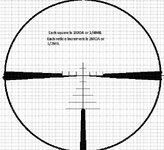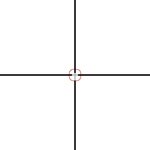Alkaline batteries do not handle cold well. That is a fact. Lithium batteries do much better in cold. Im not super up on the coin batteries as used in most scopes. I haven’t had cold weather issues with illumination, but I also don’t own scopes that require illumination, so I really couldn’t prove it one way or another. I have had plenty of battery problems in cold weather with other equipment (rangefinders, headlamps, transceivers, radios, etc), which is where my skepticism comes from. Please note that I was quick to say that my preference may be emotional, and not based in fact. I simply haven’t tested scope Illumination enough to get over my skepticism. I have found a few ffp reticles that are easily usable at lowest magnification without illumination, so I haven’t really needed to test it.I’ve never been in a scenario where that was an issue.
It was brought up earlier that the reticle shouldn’t have to depend on illumination at lower magnification.
I asked @Johnwell why he thought that and @Macintosh said he didn’t want to depend on batteries in the cold.
That was where my question about batteries in cold weather came from.
Ultimately this nightforce scope is being discussed mostly because it is reliable. I hope those who consider reliability important can at least appreciate my skepticism on relying on a battery-powered system, after having had numerous problems with batteries in cold weather. It may very well be that the likelihood of the illumination failing is very low, but since I don’t need it at all with other reticles it seemed a decision on balance that others might appreciate even if they dont necessarily take the same approach.


